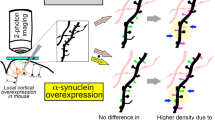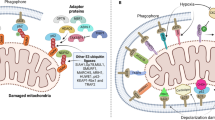Abstract
Apoptosis is a highly complex form of cell death that can be triggered by alterations in Ca2+ homeostasis. Members of the Bcl-2 family may regulate apoptosis and modulate Ca2+ distribution within intracellular compartments. Bax, a proapoptotic member of the family, is constitutively expressed and soluble in the cytosol and, under apoptotic induction, translocates to mitochondrial membranes. However, it is not clear if the intracellular Ca2+ stores and selective Ca2+ releases can modulate or control Bax translocation. The aim of this study was to investigate the relation of intracellular Ca2+ stores with Bax translocation in rat cortical astrocytes. Results show that the classical apoptotic inducer, staurosporine, caused high elevations of cytosolic Ca2+ that precede Bax translocation. On the other hand, agents that mobilize Ca2+ from endoplasmic reticulum such as noradrenaline or thapsigargin, induced Bax translocation, while mitochondrial Ca2+ release evoked by carbonyl cyanide-p-(trifluoromethoxyphenyl) hydrazone was not able to cause Bax punctation. In addition, microinjection of inositol 1,4,5- trisphosphate induced Bax translocation. Taken together, our results show that in Bax overexpressing cortical astrocytes, endoplasmic reticulum-Ca2+ release may induce Bax transactivation and specifically control apoptosis.






Similar content being viewed by others
Abbreviations
- ER:
-
Endoplasmic reticulum
- IP3:
-
Inositol 1,4,5-trisphosphate
- NA:
-
Noradrenaline
- TG:
-
Thapsigargin
- FCCP:
-
Carbonyl cyanide-p-(trifluoromethoxyphenyl) hydrazone
- STS:
-
Staurosporine
References
Youle RJ, Strasser A (2008) The BCL-2 protein family: opposing activities that mediate cell death. Nat Rev Mol Cell Biol 9:47–59
Rong Y, Distelhorst CW (2008) Bcl-2 protein family members: versatile regulators of calcium signaling in cell survival and apoptosis. Annu Rev Physiol 70:2.1–2.19
Jiang S, Chow SC, Nicotera P, Orrenius S (1994) Intracellular Ca2+ signals activate apoptosis in thymocytes: studies using the Ca(2+)-ATPase inhibitor thapsigargin. Exp Cell Res 212:84–92
Wertz IE, Dixit VM (2000) Characterization of calcium release-activated apoptosis of LNCaP prostate cancer cells. J Biol Chem 275:11470–11477
Pinton P, Ferrari D, Rapizzi E, Virgilio FD, Pozzan T, Rizzuto R (2001) The Ca2+ concentration of the endoplasmic reticulum is a key determinant of ceramide-induced apoptosis: significance for the molecular mechanism of Bcl-2 action. EMBO J 20:2690–2701
Rizzuto R, Pinton P, Carrington W, Fay FS, Fogarty KE, Lifshitz LM, Tuft RA, Pozzan T (1998) Close contacts with the endoplasmic reticulum as determinants of mitochondrial Ca2+ responses. Science 280:1763
Hajnoczky G, Robb-Gaspers LD, Seitz M, Thomas AP (1995) Decoding of cytosolic calcium oscillations in the mitochondria. Cell 82:415–424
Jouaville LS, Ichas F, Holmuhamedov EL, Camacho P, Lechleiter JD (1995) Synchronization of calcium waves by mitochondrial substrates in Xenopus laevis oocytes. Nature 377:438
Rizzuto R, Simpson AW, Brini M, Pozzan T (1992) Rapid changes of mitochondrial Ca2+ revealed by specifically targeted recombinant aequorin. Nature 358:325–327
Scorrano L, Oakes SA, Opferman JT, Cheng EH, Sorcinelli MD, Pozzan T, Korsmeyer SJ (2003) BAX and BAK regulation of endoplasmic reticulum Ca2+: a control point for apoptosis. Science 300:135–139
Hsu YT, Wolter KG, Youle RJ (1997) Cytosol-to-membrane redistribution of Bax and Bcl-X(L) during apoptosis. Proc Natl Acad Sci USA 94:3668–3672
Wolter KG, Hsu YT, Smith CL, Nechushtan A, Xi XG, Youle RJ (1997) Movement of Bax from the cytosol to mitochondria during apoptosis. J Cell Biol 139:1281–1292
Nakagawa T, Zhu H, Morishima N, Li E, Xu J, Yankner BA, Yuan J (2000) Caspase-12 mediates endoplasmic-reticulum-specific apoptosis and cytotoxicity by amyloid-beta. Nature 403:98–103
Wei MC, Zong WX, Cheng EH, Lindsten T, Panoutsakopoulou V, Ross AJ, Roth KA, MacGregor GR, Thompson CB, Korsmeyer SJ (2001) Proapoptotic BAX and BAK: a requisite gateway to mitochondrial dysfunction and death. Science 292:727–730
Cheng EH, Wei MC, Weiler S, Flavell RA, Mak TW, Lindsten T, Korsmeyer SJ (2001) BCL-2, BCL-X(L) sequester BH3 domain-only molecules preventing BAX- and BAK-mediated mitochondrial apoptosis. Mol Cell 8:705–711
Kroemer G, Galluzzi L, Brenner C (2007) Mitochondrial membrane permeabilization in cell death. Physiol Rev 87:99–163
Li B, Dou QP (2000) Bax degradation by the ubiquitin/proteasome-dependent pathway: involvement in tumor survival and progression. Proc Natl Acad Sci U S A 97:3850–3855
Cerella C, Mearelli C, Coppola S, D’Alessio M, De Nicola M, Diederich M, Ghibelli L (2007) Sequential phases of Ca2+ alterations in pre-apoptotic cells. Apoptosis 12:2207–2219
Dubrez L, Coll J-L, de Fraipont F, Hurbin A, Lantejoul S, Favrot M-C (2001) Caffeine sensitizes human H358 cell line to p53-mediated apoptosis by inducing mitochondrial translocation and conformational change of BAX protein. J Biol Chem 276:38980–38987
Carvalho ACP, Sharpe J, Rosenstock TR, Teles AFV, Youle RJ, Smaili SS (2004) Bax affects intracellular Ca2+ stores and induces Ca2+ wave propagation. J Biol Chem 11:1265–1276
Orrenius S, Zhivotovsky B, Nicotera P (2003) Regulation of cell death: the calcium-apoptosis link. Nat Rev Mol Cell Biol 4:552–565
Hirata H, Machado LS, Okuno CS, Brasolin A, Lopes GS, Smaili SS (2006) Apoptotic effect of ethanol is potentiated by caffeine-induced calcium release in rat astrocytes. Neurosc Letters 393:136–140
Thastrup O, Cullen PJ, Drøbak BK, Hanley MR, Dawson AP (1990) Thapsigargin, a tumor promoter, discharges intracellular Ca2+ stores by specific inhibition of the endoplasmic reticulum Ca2(+)-ATPase. Proc Natl Acad Sci U S A 87:2466–2470
Duffy S, MacVicar BA (1995) Adrenergic calcium signaling in astrocyte networks within the hippocampal slice. J Neurosci 15:5535–5550
Kirischuk S, Tuschick S, Verkhratsky A, Kettenmann H (1996) Calcium signalling in mouse Bergmann glial cells mediated by alpha1-adrenoreceptors and H1 histamine receptors. Eur. J. Neurosci 8:1198–1208
Fumagalli M, Brambilla R, D’Ambrosi N, Volonté C, Matteoli M, Verderio C, Abbracchio MP (2003) Nucleotide-mediated calcium signaling in rat cortical astrocytes: role of P2X and P2Y receptors. Glia 43:218–03
Kruman I, Guo Q, Mattson MP (1998) Calcium and reactive oxygen species mediate staurosporine-induced mitochondrial dysfunction and apoptosis in PC12 cells. J Neurosci Res 51:293–308
Smaili SS, Hsu YT, Sanders KM, Russell JT, Youle RJ (2001) Bax translocation to mitochondria subsequent to a rapid loss of mitochondrial membrane potential. Cell Death Differ 8:909–920
Smaili SS, Hsu Y-T, Rosenstock TR, Carvalho ACP, Sharpe J, Youle RJ (2003) Mitochondria, calcium and pro-apoptotic proteins as mediators in cell death signaling. Braz J Med Biol Res 36:183–190
Rizzuto R, Pozzan T (2006) Microdomains of intracellular Ca2+: molecular determinants and functional consequences. Physiol Rev 86:369–408
Berridge MJ Inositol trisphosphate and calcium signalling mechanisms. Biochim Biophys Acta, [Epub ahead of print]
Petersen OH, Michalak M, Verkhratsky A (2005) Calcium signalling: past, present and future. Cell Calcium 38:161–169
Pinton P, Giorgi C, Siviero R, Zecchini E, Rizzuto R (2008) Calcium and apoptosis: ER-mitochondria Ca2+ transfer in the control of apoptosis. Oncogene 27:6407–6418
Hanson CJ, Bootman MD, Roderick HL (2004) Cell signalling: IP3 receptors channel calcium into cell death. Curr Biol 14:933–935
Estrada M, Varshney A, Ehrlich BE (2006) Elevated testosterone induces apoptosis in neuronal cells. J Biol Chem 281:25492–25501
Ruiz A, Matute C, Alberdi E (2009) Endoplasmic reticulum Ca2+ release through ryanodine and IP3 receptors contributes to neuronal excitotoxicity. Cell Calcium 46:273–281
Zhang S, Hisatsume C, Matsu-Ura T, Mikoshiba K (2009) G-protein-coupled receptor kinase-interacting proteins inhibit apoptosis by inositol 1,4,5-triphosphate receptor mediated Ca2+ signal regulation. J Biol Chem 284:29158–29169
Li G, Mongillo M, Chin KT, Harding H, Ron D, Marks AR, Tabas I (2009) Role of ERO1-alpha-mediated stimulation of inositol 1,4,5-triphosphate receptor activity in endoplasmic reticulum stress-induced apoptosis. J Cell Biol 186:783–792
Luciani DS, Gwiazda KS, Yang TL, Kalynyak Y, Frey MH, Jeffrey KD, Sampaio AV, Underhill TM, Johnson JD (2009) Roles of IP3R and RyR Ca2+ channels in endoplasmic reticulum stress and beta-cell death. Diabetes 58:422–432
Charles AC, Merrill JE, Dirksen ER, Sanderson MJ (1991) Intercellular signaling in glial cells: calcium waves and oscillations in response to mechanical stimulation and glutamate. Neuron 6:983–992
Cornell-Bell AH, Finkbeiner SM, Cooper MS, Smith SJ (1990) Glutamate induces calcium waves in cultured astrocytes: long-range glial signaling. Science 247:470–473
Golovina VA, Blaustein MP (2000) Unloading and refilling of two classes of spatially resolved endoplasmic reticulum Ca(2+) stores in astrocytes. Glia 31:15–28
Scemes E (2000) Components of astrocytic intercellular calcium signaling. Mol Neurobiol 22:167–179
Sheppard CA, Simpson PB, Sharp AH, Nucifora FC, Ross CA, Lange GD, Russell JT (1997) Comparison of type 2 inositol 1,4,5-trisphosphate receptor distribution and subcellular Ca2+ release sites that support Ca2+ waves in cultured astrocytes. J Neurochem 68:2317–2327
Scemes E, Giaume G (2006) Astrocyte calcium waves: what they are and what they do. Glia 54:716–725
Vanags DM, Pörn-Ares MA, Coppola S, Burgess DH, Orrenius S (1996) Protease involvement in fodrin cleavage and phosphatidylserine exposure in apoptosis. J Biol Chem 271:31075–31085
Wood DE, Thomas A, Devi LA, Berman Y, Beavis RC, Reed JC, Newcomb EW (1998) Bax cleavage is mediated by calpain during drug-induced apoptosis. Oncogene 17:1069–1078
Choi WS, Lee EH, Chung CW, Jung YK, Jin BK, Kim SU, Oh TH, Saido TC, Oh YJ (2001) Temporospatial sequence of cellular events associated with etoposide-induced neuronal cell death: role of antiapoptotic protein Bcl-X(L). J Neurochem 77:1531–1541
Oakes SA, Scorrano L, Opferman JT, Bassik MC, Nishino M, Korsmeyer SJ (2005) Proapoptotic BAX and BAK regulate the type 1 inositol trisphosphate receptor and calcium leak from the endoplasmic reticulum. Proc Natl Acad Sci USA 102:105–110
Acknowledgments
This project was supported by grants from Fundação do Amparo à Pesquisa do Estado de São Paulo (FAPESP) and by a Conselho Nacional de Desenvolvimento Científico e Tecnológico (CNPq) fellowship. Y. -T. Hsu was funded by a grant from the NIH NS40932.
Author information
Authors and Affiliations
Corresponding author
Electronic supplementary material
Below is the link to the electronic supplementary material.
11064_2011_411_MOESM1_ESM.avi
Movie shows astrocytes overexpressing EGFP-Bax and stimulated with TG. Before TG (1 µM) addition, Bax appeared more soluble in the cytosol. After 2-3 hours of incubation with TG, EGFP-Bax showed punctated which is compatible with Bax translocation. See description in Figure 3 legend and Results (AVI 23812 kb)
11064_2011_411_MOESM2_ESM.avi
Movie shows astrocytes transfected with EGFP-Bax (shown in blue) and loaded with Fura-2. Adjacent to the GFP-Bax transfected cell an astrocyte was microinjected with IP3 (10 nM). After injection, there was an increase in calcium (shown by change in colors from yellow to red) that occurred not only in the microinjected but also in the adjacent untransfected cells (in purple). The IP3 addition also caused EGFP-Bax translocation, as described in Figure 5 and Results (AVI 368645 kb)
Rights and permissions
About this article
Cite this article
Morales, A.P., Carvalho, A.C.P., Monteforte, P.T. et al. Endoplasmic Reticulum Calcium Release Engages Bax Translocation in Cortical Astrocytes. Neurochem Res 36, 829–838 (2011). https://doi.org/10.1007/s11064-011-0411-8
Accepted:
Published:
Issue Date:
DOI: https://doi.org/10.1007/s11064-011-0411-8




